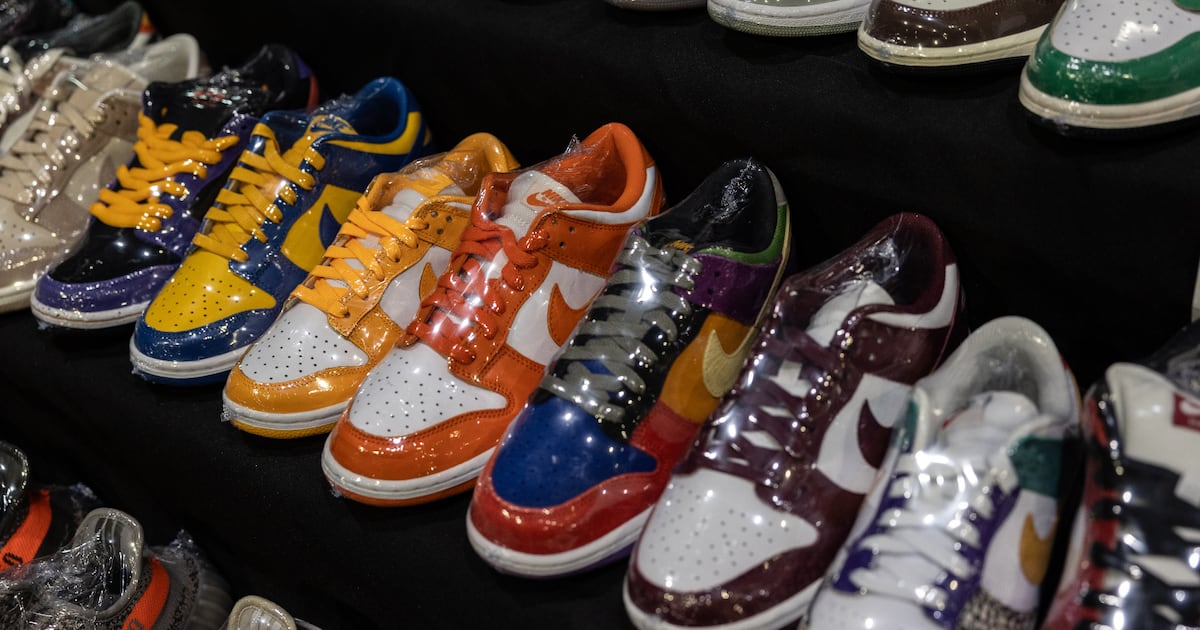On Monday, Elliott Hill arrived at the starting block for his new role as Nikeâs chief executive with a long row of hurdles in front of him.
There are Nikeâs challenges rebuilding its relationships with wholesale partners, the rise of brands like On and Hoka drawing away customers and Nikeâs lack of innovative new products to help it fend off the competition, to name a few.
But one of the biggest issues facing Nike right now is its declining brand heat.
For years Nike was the hottest sneaker brand around, a status built on the popularity of a handful of retro models such as Jordan 1s, Dunks and Air Force 1s that customers clamoured to get their hands on during and after the pandemic. But those shoes have cooled considerably. Data from sources such as Google and the resale market show how interest around them has declined, suggesting a broader cool down for the Nike brand.
Nike remains one of the most popular consumer brands, of course, even with the downturn. But the trend is certainly one Hill and Nike leadership would like to reverse.
It opens the door for competitors such as Nikeâs long-time rival, Adidas, not to mention a host of smaller challenger brands, to draw away its customers. In the US, for example, Nikeâs home turf, Adidasâ Samba has overtaken key Nike styles in search interest on Google.
The resale market, while just a fraction of total sneaker sales, provides another barometer of Nikeâs brand. Scarcity had been vital to the success of styles like Jordan 1s and Dunks, and while Air Force 1s were more widely distributed, Nike would also drop collaborations and limited colourways. Demand across the board could far outstrip supply, which at times caused complaints among shoppers but also fuelled Nikeâs hype and led to high premiums on the resale market, reflecting the power of Nikeâs cultural cachet.
But data from UBS shows resale prices for Nikeâs key franchises have declined over the past year. The resale market on the whole has been struggling, and after a dip over the summer, which historically sees a slowdown in the secondary market, prices have rebounded some. But the overall trend is that premiums on Nikeâs tentpole styles have fallen, signalling a drop in their cultural currency.
Part of the issue is that Nike increased production of these shoes to juice sales and oversaturated the market. On its latest earnings call, Nike acknowledged the issue, sharing that it was âintentionally reducing the proportionâ of its business carried by those styles. Revenue from these franchises âdeceleratedâ in the quarter â down nearly 50 percent compared to the previous year on Nikeâs e-commerce channels â as the brand moved to tighten supply.
But Nike faces a conundrum as it still relies on these styles for a significant share of sales. The company said it had seen much better sales trends for these styles via wholesale and was rebalancing its distribution. According to research from Bernstein, while Jordan and Dunk releases are slowing, multiple new products from both franchises are still being released each week via wholesale. Even with reports online that anticipated holiday Jordan releases are being cancelled, new Jordans still make up the bulk of releases at Nikeâs wholesale accounts for Footlocker, Finish Line and Dickâs Sporting Goods.
These franchises arenât the only ones Nike relies on to sustain its brand, of course. But Nikeâs resale value has also dropped on other styles lauded by sneakerheads. UBS found the average last sale price for shoes in Nikeâs SB line â its skateboarding division and home to some of its most-hyped collaborations â declined 11 percent between September 2023 and 2024, despite receiving exposure from gold medalists at the 2024 Paris Olympics and launching products with artists like Futura. Meanwhile, the average last sale price of the Air Jordan 4, another style with a devoted following among sneaker fans, declined 28 percent.
A bright spot within the secondary market, however, was the Air Max line, where average sale prices rose three percent. Nike has turned to the franchise to carry a greater share of sales in recent months, releasing the new Air Max DN and re-releasing a lesser-known silhouette, the Air Max Sunder.
Nikeâs brand remains strong even amid these dynamics, but it is beginning to suffer. In Piper Sandlerâs semi-annual Taking Stock with Teens Survey, Nike has been named the the most-beloved footwear brand by teens season after season. However, its popularity has slipped slightly in the past two seasons, particularly amongst female consumers, while brands such as New Balance and Adidas are eating away at Nikeâs dominance.
Nike does have a few styles that are working for it, most notably in basketball and running. The brand reported positive performance in the most recent quarter for new basketball releases in its Sabrina, KD and Kobe lines. It also reported that running footwear such as the Pegasus 41 and Alpha Fly 3 are performing strongly, while its running-inspired lifestyle sneakers, which include on-trend mesh runners like the Vomero 5, V2K and P-6000, grew more than four times over in the past year. Bernstein noted that the retro Air Pegasus 2K5 is also gaining traction in this category.
Nike needs whatever help it can get at this point. The company is under pressure to come up with new innovations that excite shoppers as it pulls back on the franchises that propped up its sales for the past several years. It will take time, however, to get those fresh styles into the marketplace, and then they have to actually connect with consumers, which isnât guaranteed. In the meantime, Nike is relying on its archive and its refreshed marketing to keep up its cachet. Hill, who started in Portland as an intern in 1988 and retired in 2020 as head of commercial and marketing operations for Nike and Jordan before rejoining as CEO, still has a hard run ahead.

